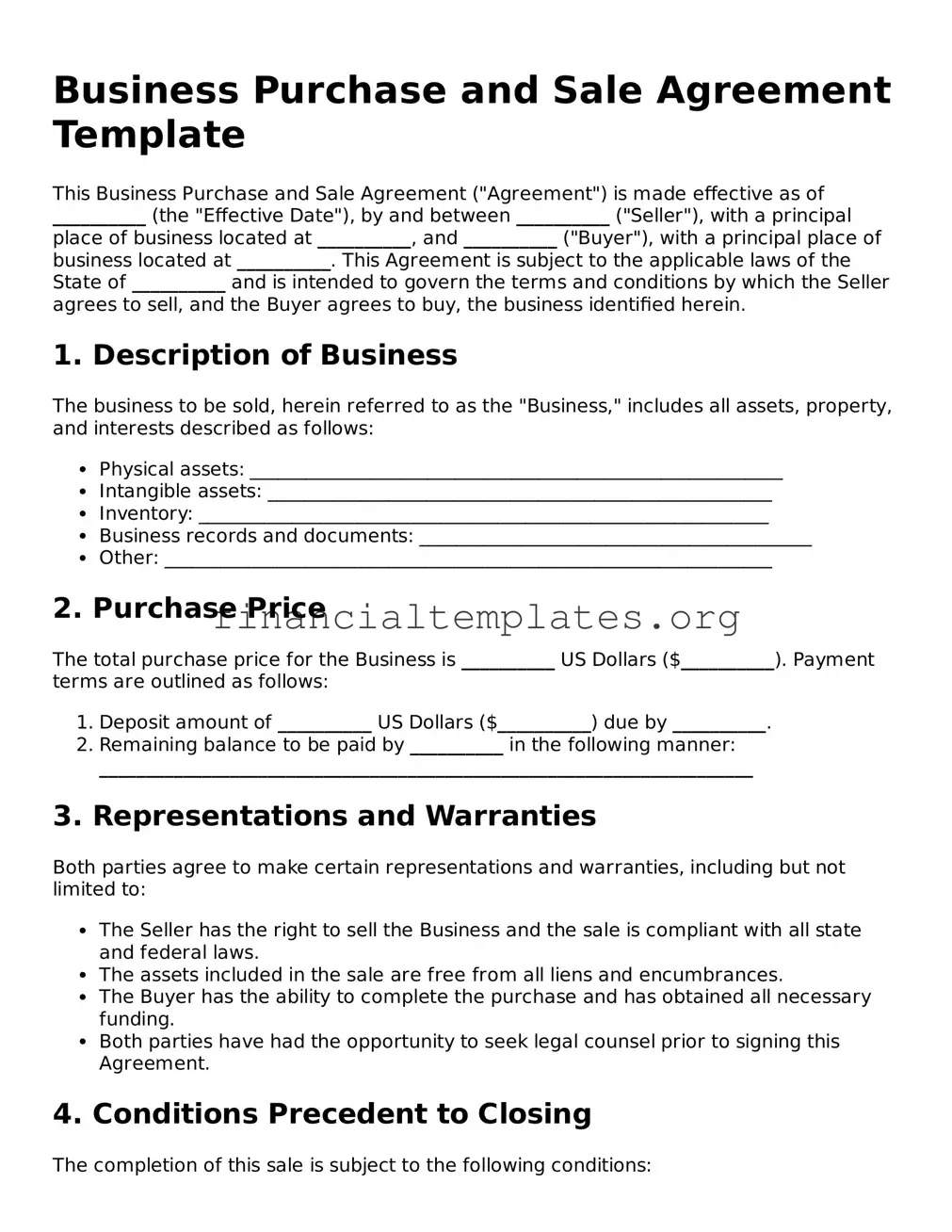Business Purchase and Sale Agreement Template
This Business Purchase and Sale Agreement ("Agreement") is made effective as of __________ (the "Effective Date"), by and between __________ ("Seller"), with a principal place of business located at __________, and __________ ("Buyer"), with a principal place of business located at __________. This Agreement is subject to the applicable laws of the State of __________ and is intended to govern the terms and conditions by which the Seller agrees to sell, and the Buyer agrees to buy, the business identified herein.
1. Description of Business
The business to be sold, herein referred to as the "Business," includes all assets, property, and interests described as follows:
- Physical assets: _________________________________________________________
- Intangible assets: ______________________________________________________
- Inventory: _____________________________________________________________
- Business records and documents: __________________________________________
- Other: _________________________________________________________________
2. Purchase Price
The total purchase price for the Business is __________ US Dollars ($__________). Payment terms are outlined as follows:
- Deposit amount of __________ US Dollars ($__________) due by __________.
- Remaining balance to be paid by __________ in the following manner:
______________________________________________________________________
3. Representations and Warranties
Both parties agree to make certain representations and warranties, including but not limited to:
- The Seller has the right to sell the Business and the sale is compliant with all state and federal laws.
- The assets included in the sale are free from all liens and encumbrances.
- The Buyer has the ability to complete the purchase and has obtained all necessary funding.
- Both parties have had the opportunity to seek legal counsel prior to signing this Agreement.
4. Conditions Precedent to Closing
The completion of this sale is subject to the following conditions:
- Satisfactory completion of all due diligence by the Buyer.
- Approval of the sale by necessary governing bodies or regulatory authorities.
- No material adverse changes in the Business's financial condition.
- Compliance with all terms of the Agreement by both parties.
5. Closing Date
The closing of the sale of the Business shall take place on __________, or at another mutually agreed upon date and time.
6. Governing Law
This Agreement shall be governed by and construed in accordance with the laws of the State of __________, without regard to its conflict of laws principles.
7. Signatures
IN WITNESS WHEREOF, the parties have executed this Agreement as of the Effective Date first above written.
Buyer's Signature: ___________________________ Date: __________
Seller's Signature: __________________________ Date: __________
